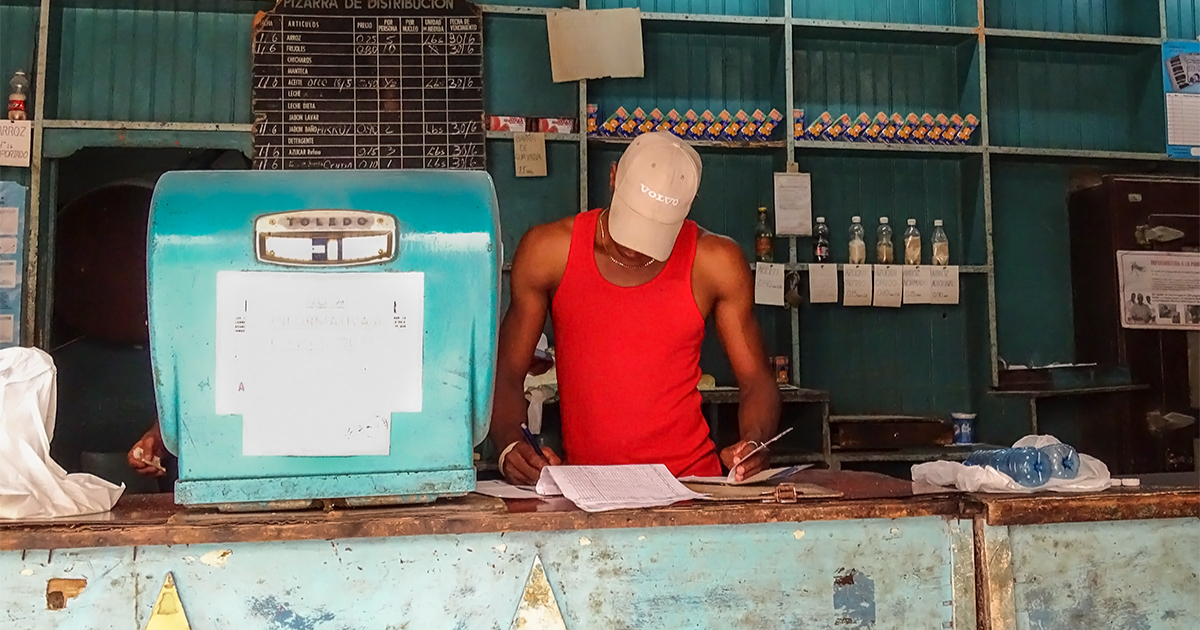
Since the end of 2023, the issue of the delivery and distribution of the supply book - or rationing - in Cuba has been struggling to achieve ratings as high as the problems with bread, milk or the increase in the price of fuel and some services. basics that amplify the situation of precariousness and chaos in which the Greater Antilles lives.
According toit was recently known, “Not having paper on time has been the fundamental cause, among others, of the delay in the delivery to the population of the well-known supply booklet in the last three years, in which the products in the family basket are recorded. regulated", because as expected "a high percentage of the paper used in Cuba for lithography depends on imports."
Already at the dawn of 2024, the crisis worsened and the Castro government went ahead to justify the lack with the same pretexts that it has always used throughout its existence. That is why they ended up confessing that "the printing industry could not ensure the production and delivery of the supply books for 2024 in the planned stage during 2023."
Joel Rodríguez Ramos, Director of Operations of the Ediciones Caribe company, in charge of printing the notebooks, explained that “although the financing for the purchase of the necessary raw materials was assigned to them in September 2023, their industry designed alternatives to comply with what was agreed (…) We assumed, as a risk, using paper that was in our warehouses, to maintain the commitment to deliver before December 20.”
The Deputy General Director of Merchandise Sales of the Mincin, Marpessa Portal de Villiers, declared that “the total number of supply books, and the modeling necessary for the work of the Consumer Registry (Oficodas), is demanded at the beginning of the year, from the industry. polygraphic, with the aim of ensuring its production and distribution during the third quarter of the year.”
"By fulfilling the deliveries in this period, he explained, the Oficodas can develop the entire process of preparing and delivering the notebooks to the warehouses, for collection by the population starting in the second decade of December." But, "Receiving the supply books, on dates when the preparation should be concluding, and creating conditions for delivery to the population, delays the process."
However, the response from Ediciones Caribe introduces a turning point in the issue of the supposed delay of the printing industry, since "it is clear that, although the last delivery was made on December 20, some production units reconciled part of the contracts since June.".
Rodríguez Ramos exemplified that, for example, the Pinar del Río Impressions Graphics unit – in charge of the notebooks of its province together with Artemisa and Mayabeque – delivered on August 31, 2023 to the Universal Products Marketing and Services Company in the territory the first 50,000, and they were completed, with 200,000 in September and 57,000 in October, thus completing what was contracted with the client before December.
Then the Mincin victimizes itself by revealing that “Once the notebooks are received at the Offices, they are filled out manually, ensuring correct preparation and completion of all data, including medical diets. This process is carried out without paralyzing the remaining activities of the Oficodas, such as serving the population and updating data for distribution by supplying entities.”
In the end, the ration books have been arriving, in one way or another, causing no small amount of interest in the population, most of whom focus on the “quality of their printing” and the completely new tone of the paper. However, there are many who identify in these changes a new form of control to avoid falsifications or adulterations, although the years continue to pass without strategic pages of this notebook being filled, such as fresh milk, meat or agricultural products.
The interior pages appear printed with the logo of the Ministry of Domestic Trade with a profusion that is difficult to imitate. Indeed, the paper has a different weight, completely different from any type of paper accessible in commercial networks in use on the Island and importantly, now the pages of the notebook are sewn and not clipped as before; perhaps, to bet on perpetuity, judging by how quickly they lost their position in the past.
For most, the aesthetic intention or delusion of control in the changes in the appearance of the notebook is not clear. The only thing that is a chorus on everyone's lips is that what is the use of such a “modern” notebook if food continues to be scarce, the products come in dribs and drabs, with calamitous quality and an increasingly limited variety.
The worst thing is that next to the wineries, crumbled testimony of a smoky past, the shops and warehouses run by SMEs are beginning to sprout, with products that never left the well-known foreign exchange collecting stores (TRD), whatever the chain, and they have even changed the urban design of the neighborhood by converting hardware, garages, parking lots and even family houses into commercial establishments where a carton of eggs costs 2700 CUP, a bottle of vegetable oil 700, a can of tomato puree 3000 and so on...
As they cross the corner, the elderly make an effort not to look in that direction, while they settle on their canes to hold on for hours in the endless lines to obtain a few books of poor quality rice, brown sugar with iron particles and a sweet potato bread. or pumpkin that barely sweeten the precarious breakfasts that have had to say goodbye to the milk and coffee that said goodbye to no longer say Hello, like their brand.
What do you think?
COMMENTFiled in: